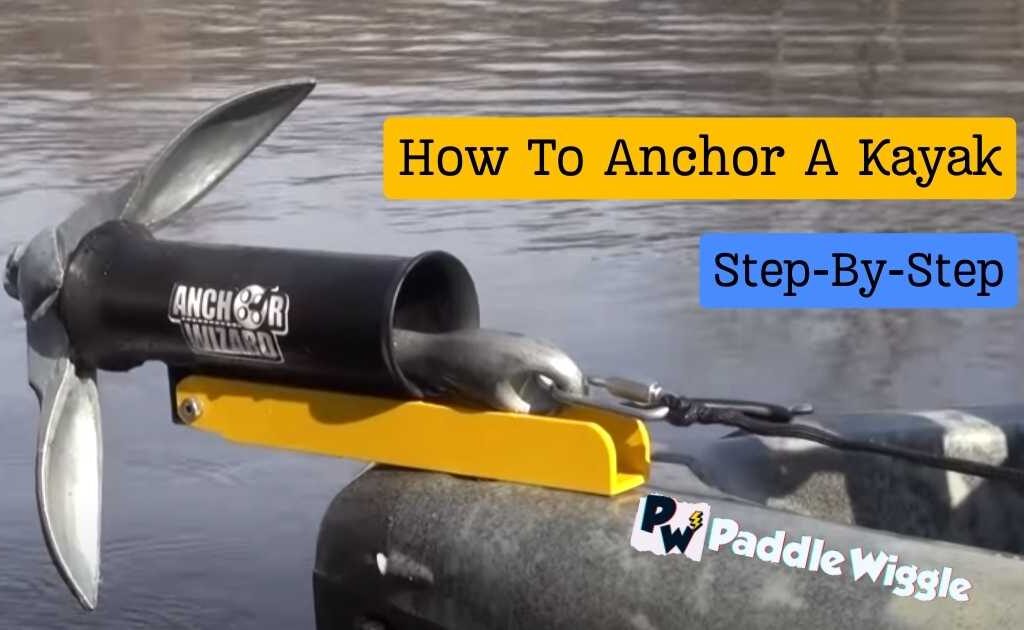Kayaking in waves is an exhilarating experience that can excite your heart. But did you know that understanding the rhythms of waves is crucial for a safe and enjoyable kayaking adventure?
Waves are like the heartbeat of the water, and knowing wave patterns can help us confidently navigate the waters.
Waves have different sizes and shapes, and knowing how they form and behave can help you avoid dangerous situations. It’s like learning to read the language of the water, allowing you to make smart decisions and stay out of harm’s way.
You might be thinking, “Isn’t understanding waves too complicated for beginners?” Not at all! In fact, you can grasp the basics and utilize them with some experience.
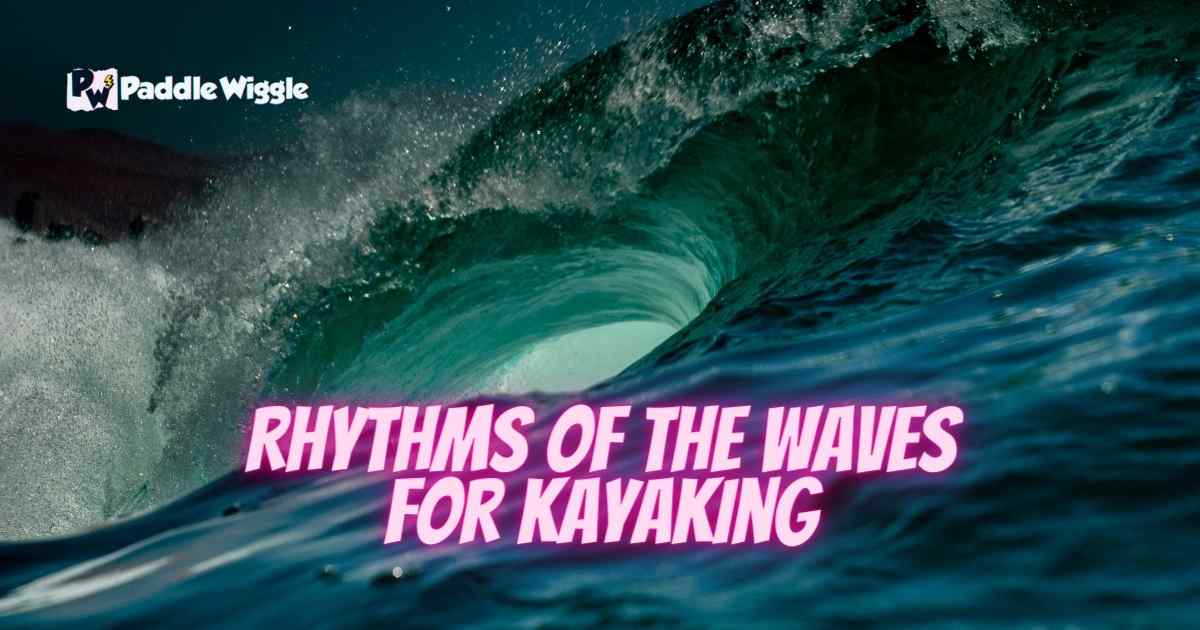
Contents
Understanding The Rhythms Of The Waves For Kayaking
When you’re kayaking in waves, it’s like riding nature’s rollercoaster. But just like a rollercoaster, waves have their patterns and rhythms.
But why is it important to understand wave rhythms for kayaking?
Well, it’s all about staying safe and maximizing the fun! When you know how waves behave, you can adjust your paddling technique accordingly. You’ll learn how to ride the waves smoothly and avoid getting tipped over by a big wave.
Understanding wave also helps you make smart decisions. You’ll know when it’s best to paddle closer to the shore or when to venture out into deeper waters. It’s like having a secret superpower that keeps you safe while you’re out exploring.
Let’s break down this:
How Do Waves Are Formed?
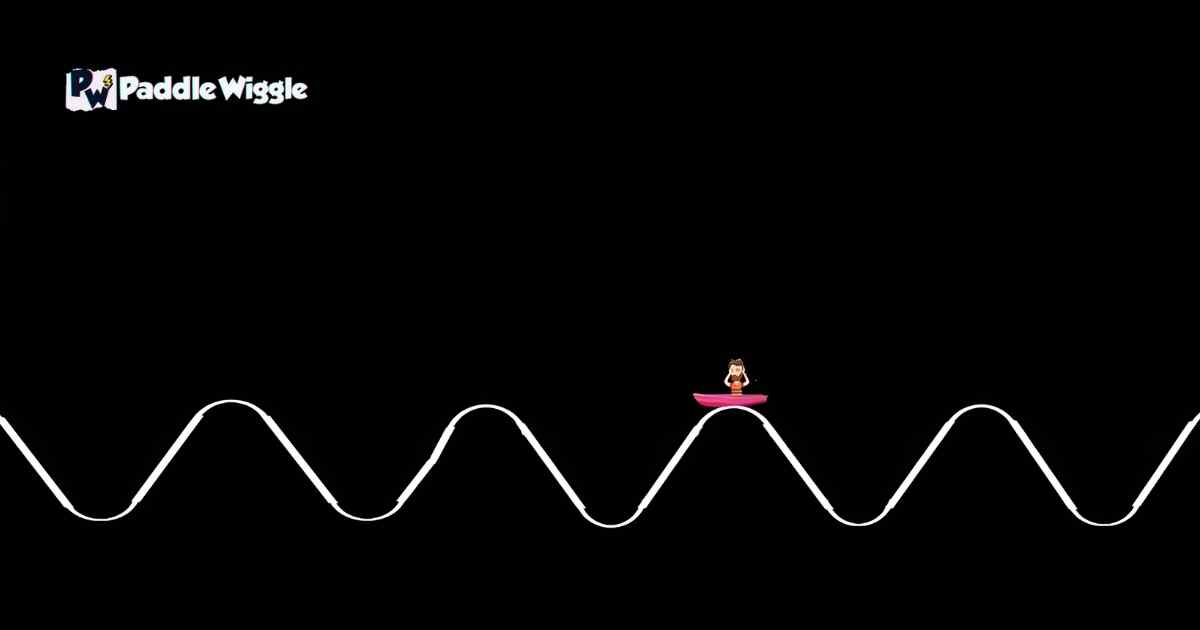

First, let’s talk about how waves are formed. Waves are created by the wind blowing across the surface of the water. The wind pushes the water and causes it to rise and fall, forming those wavy lines you see. It’s like a dance between the wind and the water!
Sizes And Shapes Of Waves
Waves come in different sizes and shapes. Some are small and gentle, while others are big and powerful. Knowing how to read waves is like being able to understand their language. You can tell if a wave will be smooth and easy to ride or if it will be bumpy and challenging.
Types Of Wave Rhythms
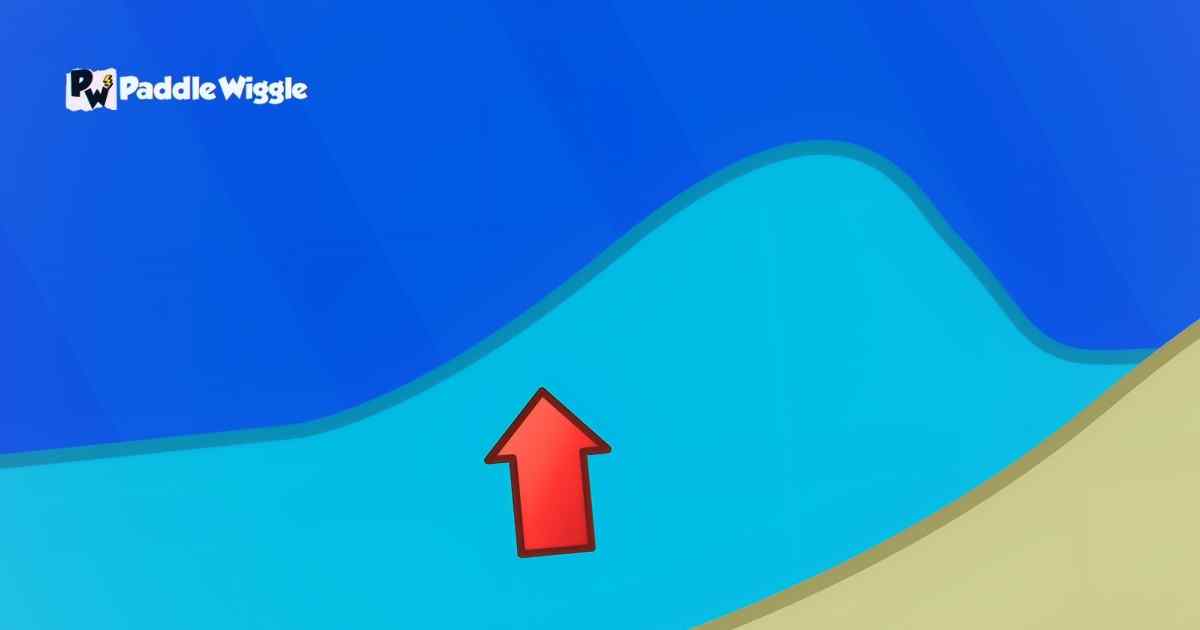

As a kayaker, it’s important to understand the different types of waves you may encounter on your sea kayaking expedition. Waves have their own characteristics. And knowing these types will make you a confident paddler.
So, let’s explore the various wave types and their characteristics.
Gentle Ripples


Ripples are like soft waves that barely disturb the water’s surface. These ripples create a soothing rhythm that’s perfect for beginners. You can paddle through them smoothly, feeling the gentle sway as you go. It’s like nature’s lullaby, rocking you gently along the way.
Rolling Swells
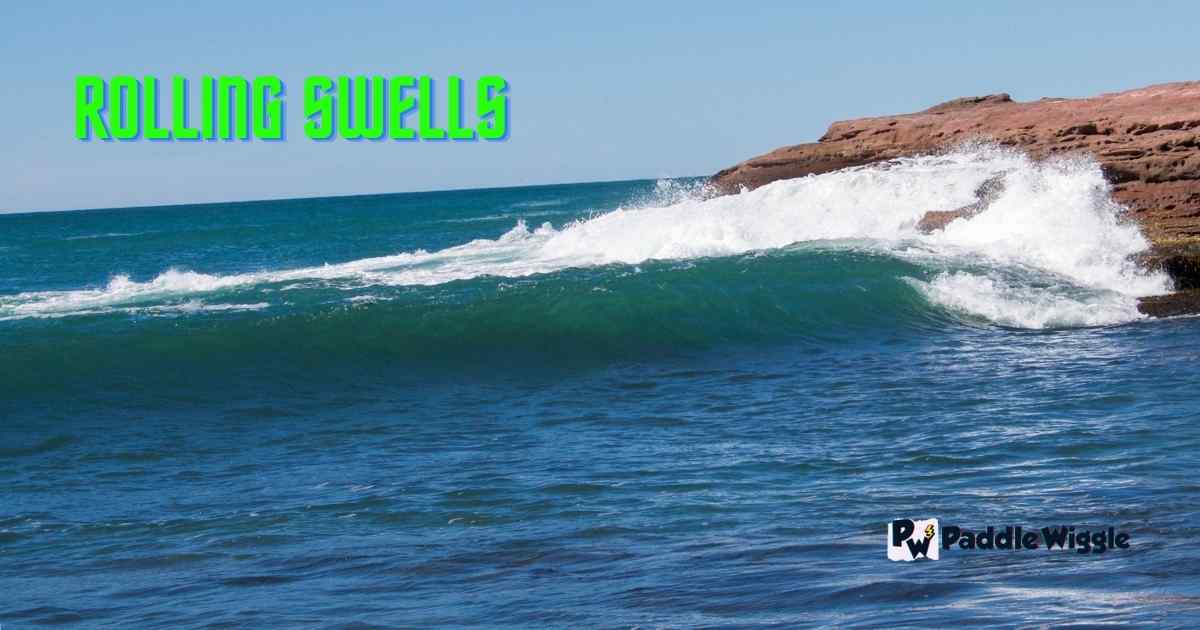

Rolling swells are larger waves that move in a rhythmic pattern. They are commonly found in the ocean or in large bodies of water. Picture yourself on a beach, watching the waves rise and fall in a graceful motion. These swells create a steady rhythm that kayakers love to ride. With the right timing and technique, you can feel the wave carry you forward, like a dance with the water.
Breaking Waves
Breaking waves are the ones that crash and create white foam. They are exciting but also require caution. You’ll find breaking waves near the shore or around rocks and reefs. You can ride these waves by catching the momentum just before they break. It’s an adrenaline-pumping experience, like surfing on your kayak!
But remember to practice in smaller breaking waves before attempting larger ones.
Tidal Waves
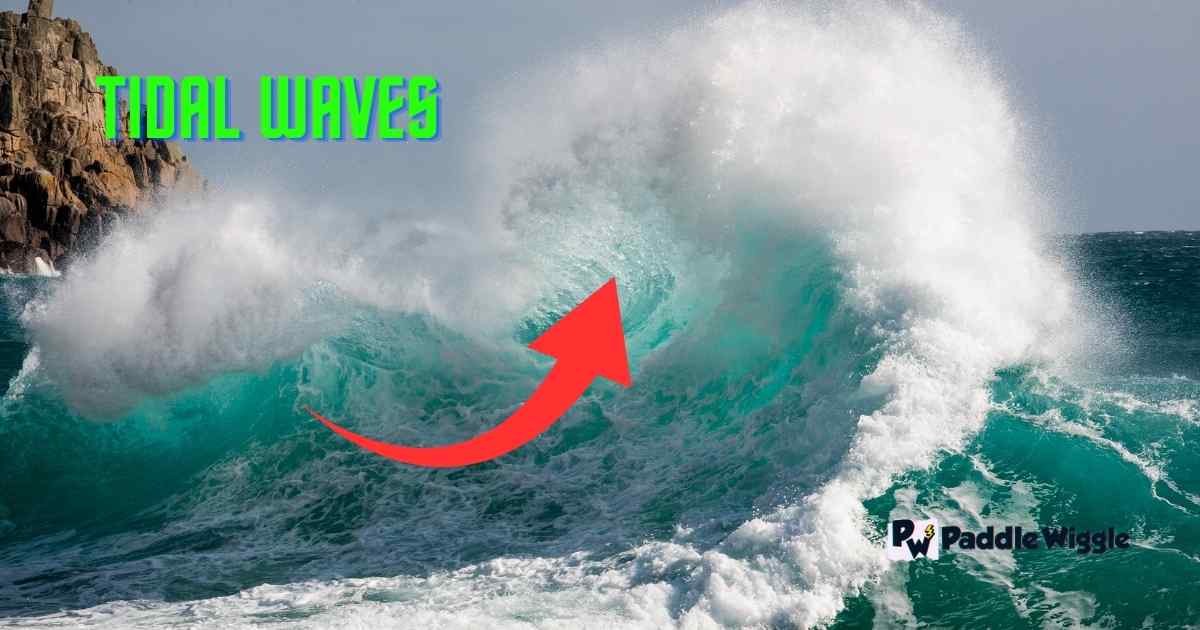

Tidal waves, also known as tidal bores or tidal surges, are special types of waves caused by the movement of tides in rivers or narrow channels. They create a powerful and fast-flowing current.
Kayakers who love a thrilling challenge can ride these tidal waves, but it’s important to have advanced skills and experience. Tidal waves demand respect and careful planning.
Choppiness
Sometimes, the water may become choppy, especially on windy days or in areas with boat traffic. Choppy waves are irregular and can make your kayak feel bouncy. They don’t have a specific rhythm but come from different directions. However, you need to maintain balance and adapt your paddling to changing conditions. It’s like navigating through a playful obstacle course!
Reading Wave Patterns
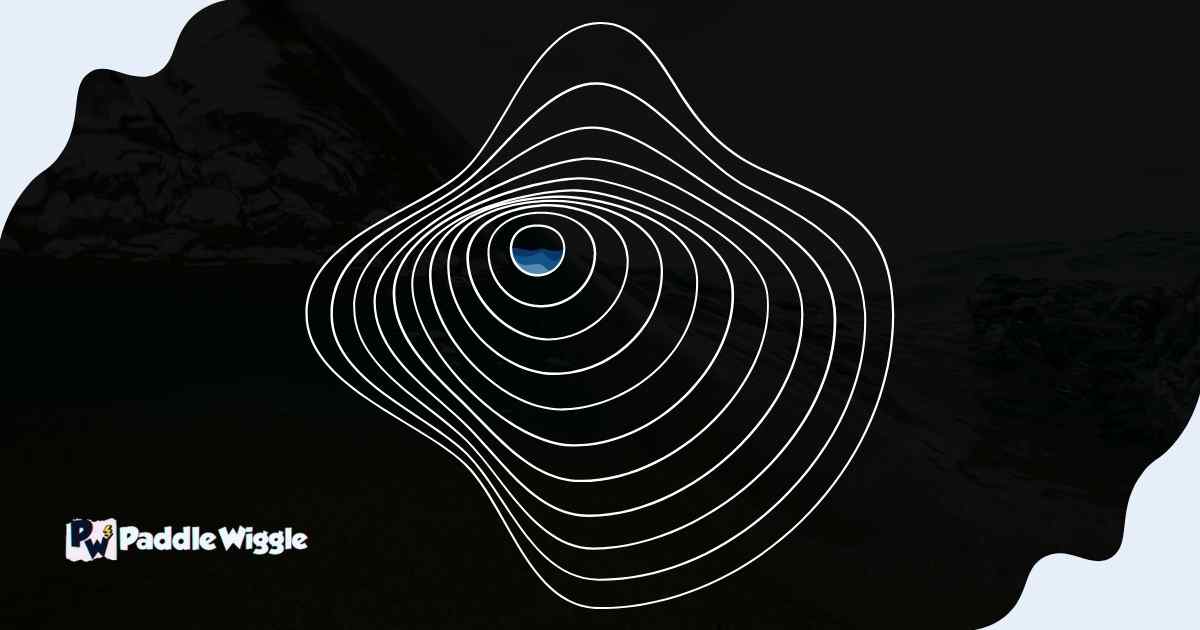

Understanding wave patterns is vital for kayaking and other water adventures. Waves are like the ocean’s heartbeat, and knowing how they work can make a big difference in how we navigate the water with confidence and skill.
Wave patterns are vital for kayaking and other water adventures. It’s like the ocean’s way of talking to us; knowing how to listen can make a huge difference in how we have fun and stay safe in the water.
But not all waves are ridable. Some waves can be dangerous and should be avoided.
These are called “breaking” waves. Breaking waves are big, powerful waves that crash and create a lot of white foam. They can be like a wall of coming waters. It’s best to stay away from them because they can tip over your kayak or push you into rocks or other things that can hurt you.
So, how can we read wave patterns to know which ones to ride and which ones to avoid?
Here are a few things to keep in mind:
Size Of Waves
Look at the size of the waves. Smaller waves are usually safer to ride, while larger waves can be more challenging and potentially dangerous.
Shape Of Waves
Pay attention to the shape of the waves. Smooth, rolling waves are ideal for riding, while steep and crashing waves are best to stay away from.
Wave Frequency
Wave frequency refers to how quickly waves come one after another. It’s like the rhythm of a drumbeat. If the waves are close together, it means they have a high frequency, and if there’s a long pause between waves, the frequency is lower. Knowing the wave frequency helps you time your paddling strokes and navigate through them smoothly.
Break Point
Notice where the waves are breaking. If you see waves breaking far away from you, it means they’re not too powerful yet and can be fun to ride. But if the waves are breaking close to you, it’s a sign that they’re strong, and you should keep your distance.
Wave Direction
Waves can come from different directions depending on the wind or other factors. By observing the direction of the waves, you can plan your route and navigate effectively. It’s like having a compass on the water! Pay attention to how the waves interact with the shoreline or other objects, as they can change direction and create interesting patterns.
Learn How To Ride Waves In A Kayak
Mastering specific techniques can enhance your experience and maximize your fun when kayaking in waves. Here are some key techniques to focus on:
Timing Is Everything
To catch the perfect wave, timing is crucial. Watch the waves and observe their rhythm. You want to paddle towards the wave just as it forms, allowing it to lift your kayak and propel you forward. Patience and timing will be your allies in mastering this technique.
Adjusting Paddling Technique
Your paddling technique will vary depending on wave characteristics. If the waves are coming from the front, paddle at a slight angle to avoid colliding with them head-on. Use powerful strokes to propel your kayak over the wave crests for larger waves. In contrast, for smaller waves, use lighter strokes to maintain control without overpowering the wave’s energy.
Positioning yourself correctly in relation to the wave is essential for a successful ride. As the wave approaches, align your kayak parallel to its direction. This allows you to ride the wave’s energy and maintain control. Adjust your position as you ride to stay in the wave’s sweet spot.
Paddle Power
Utilize the power of your paddle to navigate the wave. As you catch the wave, use strong and deliberate paddle strokes to maintain balance and steer your kayak. The paddling technique will vary depending on the type of wave, so practice different strokes to find what works best for each situation.
Balance And Bracing
Riding waves can be exhilarating but also challenging. Maintain a low and centered posture to enhance your stability. Practice bracing techniques, where you use your paddle to support yourself and prevent capsizing in turbulent conditions. Proper balance and effective bracing will help you stay upright and in control.
Kayaking Safety For Waves
Safety should always be the top priority when it comes to kayaking and riding waves. It’s important to know what to do and what to do when you kayak in waves.
Let’s explore this in an easy to apply to your own adventures on the water!
Know The Waves
Before heading out, familiarize yourself with the different types of waves you might encounter. Waves can vary in size, shape, and strength. Learn about breaking waves, where they crash and create white foam, and avoid them as a beginner. Start by practicing in calmer, smaller waves to build your skills and confidence.
Don’t Go Beyond Your Skill Level
Avoid paddling in waves that are beyond your skill level. Start with smaller waves and gradually progress to larger ones as you gain experience and confidence.
Checking Weather And Conditions
Before heading out on the water, check the weather forecast and wave conditions. High winds, storms, or strong currents can create unsafe conditions for kayaking. If conditions are unfavorable or beyond your skill level, postponing your trip for another day is best. It’s always better to be safe than sorry.
Paddling Near Shore
If you’re just starting out, staying close to the shore is advisable, especially when dealing with waves. Paddling near shore allows you to have a quick and safe return if needed. It also provides a shallower and more controlled environment where you can confidently practice your paddling skills.
Emergency Preparedness
To ensure safety, being ready for unforeseen circumstances is crucial. This involves having a signaling device to call for help during emergencies. Additionally, learning fundamental self-rescue techniques and how to get back into your kayak if it overturns is important. Practicing these skills under the supervision of experienced kayakers or responsible adults is recommended.
Learn More
Can You Kayak In Waves?
Yes, you can kayak in waves. In fact, wave kayaking is an exciting and enjoyable experience for experienced kayakers. However, it requires proper skills, knowledge, and experience to navigate waves safely and effectively.
How Do You Steer A Kayak In Waves?
You can use a combination of paddle strokes and body movements to steer a kayak in waves. You will need to master these techniques for steering a kayak in waves: sweep stroke, edging, and using a rudder or skeg.
Which Kayak Type Is Best For Waves?
Surfing kayaks are designed specifically for riding waves and are considered the best kayak type for waves.
These kayaks often feature specialized hull shapes and rocker profiles to enhance stability, control, and the ability to catch and ride waves.
Surfing kayaks typically have a shorter length and a more maneuverable design, allowing for quick turns and responsive handling in the dynamic surf environment.
Final Words
To wrap it up, waves can really affect how stable and easy to control your kayak is when you’re out on the water. And understanding how waves work is super important for having a great time kayaking.
That’s why it’s a big deal to pick the right kayak for waves, like a sit-on-top kayak or a special one just for surfing. These kayaks are made to handle rough waters and keep you balanced. Learning about wave patterns is also easy, like when they come in sets or slow down for a bit.
But don’t go beyond your skill level! Don’t forget this.

